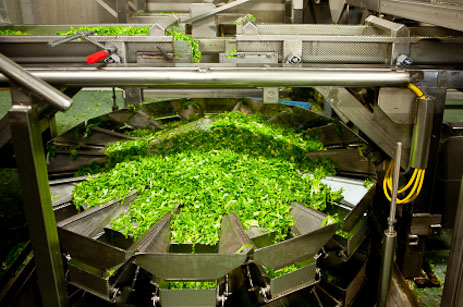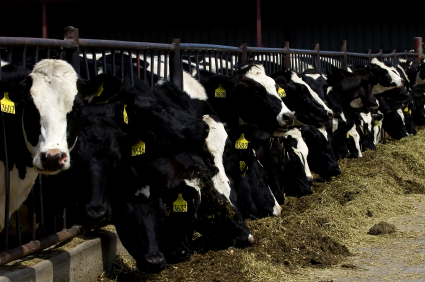Updated Nov. 29: I published this post last week, just before the nation went into a turkey coma. The Senate is scheduled to vote on the Food Safety Modernization Act (S. 510) tonight, and this morning, food-system journalists Michael Pollan and Eric Schlosser have weighed in on the bill with an authorative New York Times op-ed. Their conclusion: S. 510 marks the “best opportunity in a generation to improve the safety of the American food supply.” While it is “by no means perfect,” they argue, it “promises to achieve several important food safety objectives, greatly benefiting consumers without harming small farmers or local food producers.” I largely agree — with deep reservations; see below.
 After all the back-and-forth in our recent — and, if I may say, extremely informative — Food Fight debate on S. 510, I hold to the same opinion I expressed at first: that S. 510 represents a small step in the right direction, so long as it doesn’t crush the alternative food systems that are emerging to challenge Big Food. A very small step in the right direction, I should emphasize.
After all the back-and-forth in our recent — and, if I may say, extremely informative — Food Fight debate on S. 510, I hold to the same opinion I expressed at first: that S. 510 represents a small step in the right direction, so long as it doesn’t crush the alternative food systems that are emerging to challenge Big Food. A very small step in the right direction, I should emphasize.
Like so many debates in U.S. politics, the one currently raging around food safety strikes me as essentially tragic. It is impossible, it seems, to come up with a policy that zeroes in on the real systematic risk of the food system: the exponential expansion of hazard that comes from concentrating huge amounts of production in relatively small spaces.
Clearly, highly profitable industries like Big Food wield tremendous power in our political system. Just as no health-care reform could pass that didn’t respect the privileges of the insurance and pharmaceutical industries, just as no climate policy could even be attempted without including massive giveaways to the very industries that cause climate change (see Ryan Lizza’s tragicomic post-mortem in The New Yorker), food safety reform is evidently hostage to Big Food.
The Grocery Manufacturers of America, a potent trade group whose members range from Monsanto and Cargill to Kraft and McDonald’s, supports S. 510. That alone tells me that the bill at best promotes marginal, techno-based solutions to the food-safety problem, ones that don’t challenge the interests, or practices, of the food giants. As Food and Water Watch’s Elanor Starmer recently pointed out on Grist, the bill’s new inspection powers for the FDA are so weak that they would not even have prevented the notorious salmonella-tainted peanut butter scandal of 2009.
[UPDATE: A Monday USA Today article underlines this point. Food giants Cargill, Campbell’s Soup Co., and ConAgra all support the bill. USA Today reports:
For ConAgra Foods, supporting the food-safety bill was a no-brainer. ConAgra recalled the Marie Callender’s brand Cheesy Chicken and Rice frozen meals in June after a handful of people affected by salmonella reported eating the product. The company spent about $300,000 on lobbying efforts this year. “If this bill was on the books, it wouldn’t have changed anything about the recall,” said ConAgra spokesman Jeff Mochal. “Our own standards are already higher.” [Emphasis mine.]
And yet — as David Gumpert argued forcefully in our forum — those same powers may well prove too strong for the small-scale, vulnerable operations that are busily building up alternatives to Big Food.
So while I see the case for S. 510 — it may marginally protect consumers from the risk of getting violently ill from eating — I have profound uneasiness about it. I found expression for my unease in Burkhard Bilger’s recent sparkling New Yorker profile of home-fermentation wizard Sandor Katz (an acquaintance of mine whom I admire greatly) and the “underground food movement” Katz has helped foment.
Bilger teases out some of what is at stake in the food-safety wars. He shows that scientists are only just starting to value the importance of the microbial world for human life. “What we see as animals are partly just integrated sets of bacteria,” one biologist tells Bilger. Bilger continues:
Nearly all in the DNA in our bodies belongs to microorganisms: they outnumber our own cells nine to one. They process the nutrients in our guts, produce the chemicals that trigger sleep, ferment the sweat on our skin and the glucose in our muscles. … They work with the immune system to mediate chemical reactions and drive out thr most common infections. Even our own cells are kept alive by mitochondria — the tiny microbial engines in their cytoplasm. Bacteria are us.
After rounding up some cutting-edge recent science on bacteria, Bilger concludes, “Given how little we know about our inner ecology, carpet-bombing it might not always be the best idea.” He quotes the above-mentioned biologist: “When you advocate your soaps that say they kill all harmful bacteria, you are committing suicide.”
In a sense, I fear, our food-safety regime is lurching along the path that sees bacteria itself as a problem to be wiped out, rather than focusing on specific practices that create niches for bacteria that are known to be harmful. To see what I mean, take a hard look at the U.S. egg industry, which has pretty much exposed itself as a pathogen-concentrating disaster this year. For the latest gory details, see this Humane Society exposé about Cal-Maine, putatively the nation’s largest egg operation. In the end, S. 510 might force huge egg operations to sterilize their eggs before they reach the shelf or vaccinate their hens against salmonella — a problematic response, in my view — but it won’t force them to stop cramming hens tightly together in cages.
But to tease out my point, let’s consider the role of the federal government in regulating two kinds of dairy farms: industrial-scale ones in Wisconsin, and a small artisanal operation in Washington State.
In a fantastic investigative piece last year, The New York Times‘ Charles Duhigg looked at a spate of illnesses in a dairy-intensive Wisconsin county. He wrote:
There are 41,000 dairy cows in Brown County, which includes Morrison, and they produce more than 260 million gallons of manure each year, much of which is spread on nearby grain fields. Other farmers receive fees to cover their land with slaughterhouse waste and treated sewage.
After an early thaw last
year, some of those quarter-billion gallons of cow shit found their way into people’s drinking water. Reports Duhigg:
In Morrison, more than 100 wells were polluted by agricultural runoff within a few months, according to local officials. As parasites and bacteria seeped into drinking water, residents suffered from chronic diarrhea, stomach illnesses and severe ear infections.
So here we have a case of vast concentration of production, and a situation wherein known microbial pathogens (including E. coli and fecal coliform) are destined to foul people’s water and make them ill. This is systematic, predictable risk. The federal government’s response?
[R]unoff from all but the largest farms is essentially unregulated by many of the federal laws intended to prevent pollution and protect drinking water sources. The Clean Water Act of 1972 largely regulates only chemicals or contaminants that move through pipes or ditches, which means it does not typically apply to waste that is sprayed on a field and seeps into groundwater.
 The real food-safety problem is staring us right in the face.Now let’s look at case No. 2: Estrella Family Creamery in Washington state, where Kelli Estrella and her family tend 36 cows and 40 goats and turn their milk into highly regarded unpasteurized cheeses. New York Times food-business reporter William Neuman reports that — unlike those Wisconsin dairies — the Estrella operation has made no one sick. Yet FDA inspectors have found listeria in some of her cheeses — and moved to shut down her operation after she refused to submit to a “voluntary” recall. And they’ve banned Estrella from selling both her hard and soft cheeses, even though only her soft cheese tested positive for listeria.
The real food-safety problem is staring us right in the face.Now let’s look at case No. 2: Estrella Family Creamery in Washington state, where Kelli Estrella and her family tend 36 cows and 40 goats and turn their milk into highly regarded unpasteurized cheeses. New York Times food-business reporter William Neuman reports that — unlike those Wisconsin dairies — the Estrella operation has made no one sick. Yet FDA inspectors have found listeria in some of her cheeses — and moved to shut down her operation after she refused to submit to a “voluntary” recall. And they’ve banned Estrella from selling both her hard and soft cheeses, even though only her soft cheese tested positive for listeria.
Now, I don’t want to make light of the threat of listeria, a truly nasty bacteria. But let’s look as the risks here. Unlike the case of the Wisconsin dairies, the risks are incidental, not systematic. People made cheese for millenia before the advent of pasteurization in the 19th century — and in much of Europe, nearly all cheese is still made with raw milk. Small children and pregnant mothers aren’t regularly falling over from cheese-eating in France. Listeria can infect raw milk cheese, but by no means does it always infect raw milk cheese.
Moreover, listeria from Estrella Creamery cheese threatens only those people who knowingly buy the product, while runoff from Wisconsin’s industrial-scale dairies infects everyone who lives nearby. And the threats from Estrella remain theoretical; unlike in that dairy-intensive Wisconsin county, no one has reported falling ill from eating Estrella cheese.
And yet federal officials take an our-hands-are-tied approach to the menace of tainted water in Wisconsin, and bring down an iron fist on the small dairy in Washington. It’s hard not to conclude that the disparate responses stem from the fact that industrial-scale dairy farmers — and the very few large processors that purchase their milk — have bought influence in Washington, while artisanal cheese producers haven’t. This is food safety as protection racket.
For Big Food, the answer to these microbial dilemmas might well end up being: sterilize it all. Most cheese consumed in the United States is made from pasteurized milk; make them pasteurize all of it. And if runoff from fields sprayed with waste from massive dairies is fouling drinking water, then make those big dairies “treat” the waste with antimicrobials before spreading it.
But Bilger’s profile of Sandor Katz suggests a different approach. The real systematic risks in our food system don’t come from bacteria itself; indeed, bacteria is fundamental to life. The problem comes from concentration of bacteria to the point where sicknesses become inevitable. So de-concentrate the food system, don’t sterilize it.
And as for cases like Estrella Creamery, the push should be to identify the source of the listeria and address it, not to shut the dairy down.
Of course, in our political system, creating a food-safety regime that targets the real systematic risk in food production seems impossible. So, while we take small steps forward like S. 510, let’s not lose sight of the need to rein in the giant corporations that generate most of the risk, and nurture the small producers who are doing the necessary work of de-concentrating our pathogen-concentrating food system.
Get off your ass alert: Call your senators today and urge them to stop delaying and vote for the bill.



